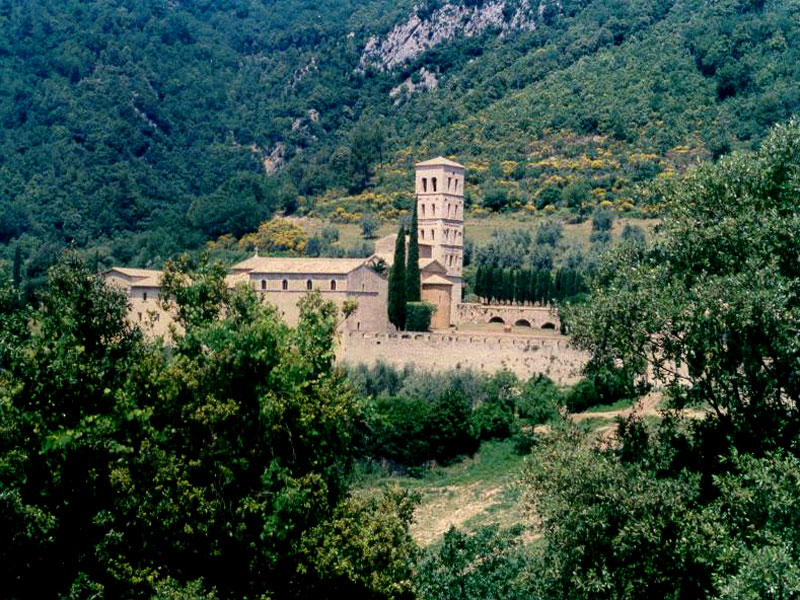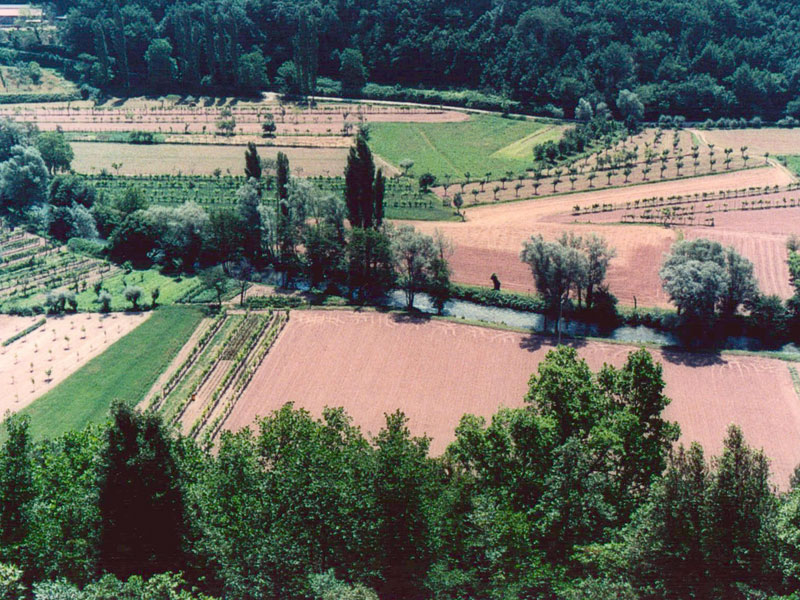Protected Area
Identity Card
- Land Surface Area: 2'460.00 ha
- Regions: Umbria
- Provinces: Terni
- Municipalities: Arrone, Ferentillo, Montefranco, Polino, Terni
- Establishment Measures: LR 9 03/03/1995
- PA Official List: EUAP0237
- Park Authority: Regione Umbria
The Territory
"Know'st thou the mountain, and its cloudy bridge?
The mule can scarcely find the misty ridge;
In caverns dwells the dragon's olden brood,
The frowning crag obstructs the raging flood.
Know'st thou it well?"
(from J. W. Goethe, Mignon)
The naturalistic and human facies of River Nera Park is the result of millenary needs and will: diverting the watercourses
and turn the potentialities of such a rich water system into a resource.
From the reclamation activities carried out by the Romans to the
hydroelectric power systems of the late 19th century. The history of
Lower Valnerina is characterized by the centuries of the establishment
of rural churches, monasteries, and abbeys and the centuries dominated
by castle building up to the acquisition of a final settlement model
founded on the rural vocation of the territory and its people which has
marked the imprinting of the contemporary ecocompatible social and
economic development and the choice of a quality lifestyle.
Consorzio del Parco Fluviale del Nera which,
since 1995, has been managing the protected area in the Municipalities
of Arrone, Ferentillo, Montefranco, Polino, and Terni, has interpreted
the priority goals of environmental, urban, cultural and monumental
heritage rehabilitation, commits itself to a widespread and coordinated
planning of the activities. A few examples: the projects "Agricoltura
Biologica nel Parco" (Organic Agriculture in the Park) and "La Filiera
della Carne Bovina del Parco" (The Beef Die of the Park); the recovery
of the thematic trails of archaeological interest, among which Tripozzo
in Arrone and Monte Moro in Montefranco; the co-participation in the
environmental education workshop of "Adottiamo il Parco"; the creation,
in association with CIAV (Centro Iniziative Ambiente Valnerina), of the
first Park Naturalistic Documentation Center, situated in the premises
of Palazzo Magalotti in Collestatte.
The Documentation Center
represents today the latest cause of pride for the Park which, after
the historical "inheritance" of San Pietro in Valle Abbey, the Mummy
Museum in Ferentillo, and Appennino Umbro Museum in Polino, wants to
promote the knowledge of all the aspects of its identity and encourage
a conscious tourism.








